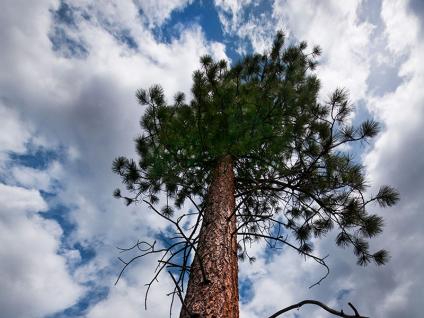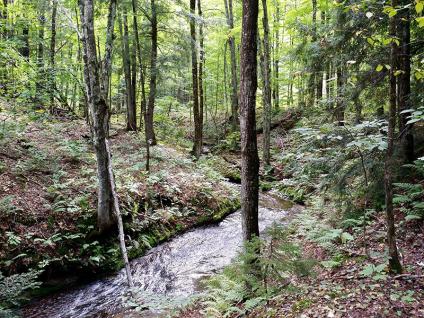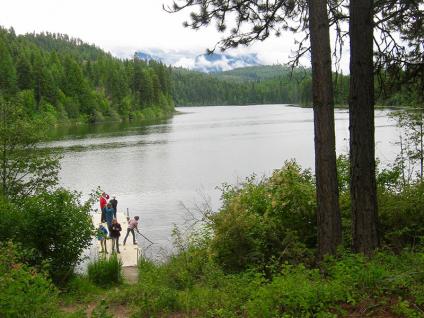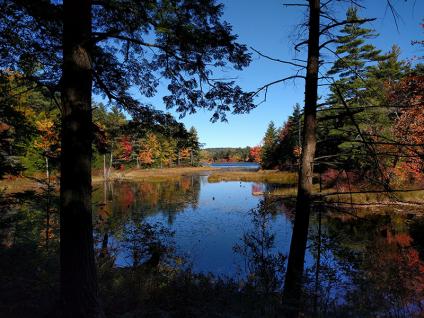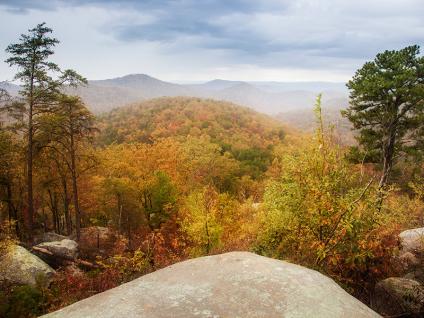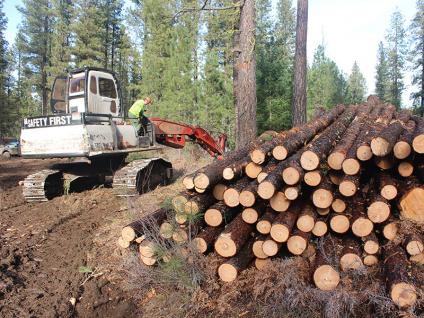Community Forest Program Projects and Partners
Communities in Vermont, Washington, South Carolina, Wisconsin, and elsewhere are conserving the places they call home and making decisions about the management of their community forests. Since its initiation in 2012, the Community Forest Program has funded 88 projects and conserved over 24,000 acres of forest.
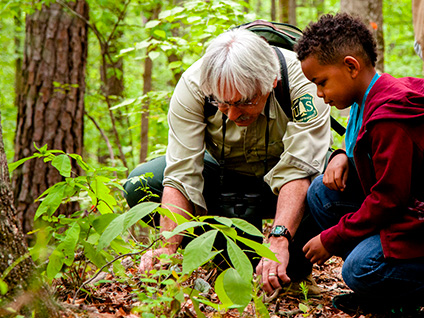
Browns Mill Food Forest (Georgia)
The 7.1 acre Browns Mill Food Forest in Georgia provides a model for community forests in an urban setting. This community in Atlanta now has access to outdoor classrooms for educators and students, a gathering place for the community to enjoy forested and stream-side areas, picnic sites, and carefully planned nature trails to play and explore the forest. The Food Forest also increases access to fresh fruit and vegetables through newly built community garden beds and a fruit and nut orchard.
Indian Creek Community Forest (Kalispel Tribe)
This Ponderosa Pine and mixed conifer forest with outstanding recreation, fish, water, and wildlife resources, is also home to culturally significant lands. The forest’s conservation creates opportunities for the Kalispel Tribe, the local community, and the adjacent Colville National Forest to collaborate on forest management.
Pilgrim Community Forest (Michigan)
The creation of the Pilgrim Community Forest helps to conserve the Pilgrim River watershed, which supports a healthy cold-water fishery and clean water while providing diverse opportunities for outdoor learning for all ages.
Alvord Lake Community Forest (Montana)
With the acquisition of the last private holding along scenic Alvord Lake, the Alvord Lake Community Forest expands and secures public access to this popular lake and its forested shoreline. Adjacent to the Kootenai National Forest, wildlife habitat and habitat connectivity for grizzly bear, wolves, mountain lions, Merriman’s turkey, and bobcats is also preserved.
Page Pond Community Forest (New Hampshire)
Situated a quarter mile from the shore of Lake Winnipesaukee in New Hampshire, the Page Pond Community Forest is an important asset for the Town of Meredith. While the first phase of the project was completed in 2009, this second phase adds nearly 200 acres to the 567-acre forest. Now under Town ownership, this working forest provides miles of walking trails, an active timber program, and new outdoor learning opportunities.
Poestenkill Community Forest (New York)
The 350 acre Poestenkill Community Forest, situated on the Rensselaer Plateau, is a popular destination for Plateau residents and visitors; offering recreational trails and a variety of educational programs for adults and children.
Rio Hondo Community Forest (Puerto Rico)
The 67.9 acre Rio Hondo Community Forest, located in the center of the Rio Hondo neighborhood in Mayaguez, Puerto Rico, serves the densely populated community of Rio Hondo and the larger Island providing numerous educational, recreational and environmental opportunities. The forest serves as a living laboratory for elementary students and a demonstration site for sustainable forest management and agroforestry practices. It also provides access to hiking, biking, and equestrian trails and other nature-based activities; and conserves habitat for wildlife including amphibians, birds and reptiles.
Nine Times Community Forest (South Carolina)
One of the three largest unprotected forest blocks left in the Blue Ridge Escarpment region of South Carolina, the 1,648-acre Nine Times Community Forest supports the recreation economy and provides a lush habitat for black bear, wild turkey, ruffed grouse, and peregrine falcons.
Mt. Adams Community Forest (Washington)
The Mt. Adams Community Forest provides jobs associated with local mills and guarantees access for traditional uses such as fishing, hunting, and wild mushroom picking.

